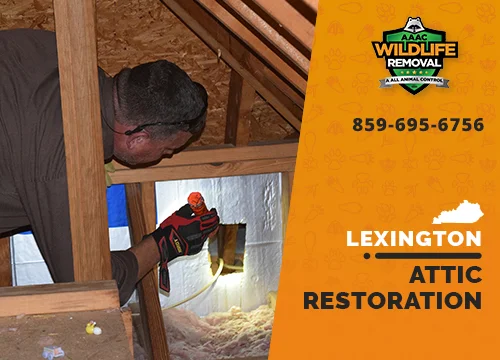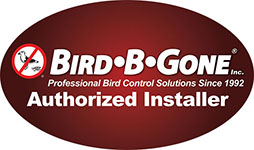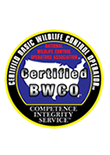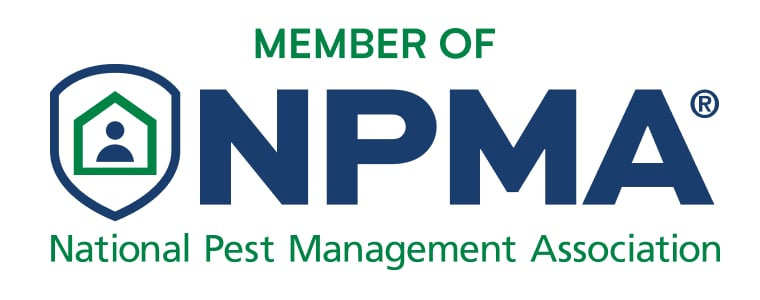How We Restore Your Attic
Although they won’t be able to chew through insulation, the pests can easily tear it. The insulating material is more than just bedding. Animals that tear at your attic’s walls will make their homes in these holes, leaving behind their own contaminants such as urine and feces. These areas are also less efficient at insulating air, allowing for air to escape or enter. This can lead to costly repairs. Here are the steps we use to restore an attic.

Scoop out Larger Feces Clumps
The first step in any attic restoration project involves removing larger feces from the attic. This can be done using tools and containers that are secure. To remove the feces on the walls and ceilings we use a long-handled, flexible tool. We soak any droppings that have dried on surfaces or are stuck to the ceiling, then use a wire brush to remove them.
AAAC technicians use an extended handle tool to climb onto the roof of your home to find high-risk areas where squirrels and rats often leave feces. Sometimes, technicians will need to remove large amounts from rafters or the eaves of your house.

Vacuum Small Feces
A thorough vacuuming of small rodent waste pellets from attics is the next step in any attic renovation project. Mice, rats, and other forms of rodent leave behind large amounts of tiny feces that can only be removed using this method. AAAC uses a specialized machine equipped with a long enough tube that can reach every corner of your attic. This machine has an extra-long vacuum tube and high-velocity suction. HEPA filters are included to remove any animal hair or droppings from insulation and other surfaces. To clean small droppings, AAAC Wildlife will also use a special brush attachment that is designed to reach tight spaces such as corners and accessible areas near the roofline.
AAAC uses a UV lamp to locate small feces found in attics. The UV light will create black dots on surfaces where feces have been left by animals, such as rats, bats, and raccoons.

Air Duct Cleaning & Repair
AAAC Wildlife Control also offers ductwork restoration and repair services. This can be hard to do, but AAAC uses a special tool to clean the inside of the ducts and remove all debris. Once that is completed, we can spray a disinfectant over the ducts to kill any bacteria, viruses, or rodents that may have been left behind.

Decontaminate the Attic
The most important part of an attic restoration project after removing the critters is the decontamination of the attic of rodent feces and urine. This is a very important part of the job and it’s done to ensure your family stays safe from microbial pathogens that could be harmful if inhaled or ingested.
AAAC Wildlife Removal uses UV light to determine if an area is contaminated by rodent droppings. After cleaning the affected areas and surfaces, technicians will use a disinfectant spray. This kills any microorganisms found in animal feces.
AAAC Wildlife Removal will fog an attic with a fine mist to kill any microorganisms from the animal droppings. The electric atomizer sprayer creates a cloud of microscopic droplets that cannot be seen by the human eye. As the droplets evaporate, they produce a chemical residue that’s toxic to microorganisms such as algae, molds, bacteria, and viruses.
Drying is an important part of the attic restoration process as any moisture left behind can cause mold growth. AAAC may use a humidifier to remove moisture from insulation and attic wood. This helps to prevent mold growth in the attic space during re-insulation.

Full Attic Insulation Replacement
To complete this part of the restoration service, technicians will perform insulation removal and then install brand new insulation. To prevent damage to neighboring areas or leaving a mess, it is essential that the old insulation be removed carefully. Insulation is often wrapped around joists/rafters. You should not pull it too hard as it could cause damage to your attic’s wood structures.
Mold spores and other hazardous substances can be found in the insulation and released into the air when removed. Our technicians are required to wear masks in order not to breathe in any dangerous particles or substances that could get into the ducts.
Technicians will install new insulation once the old insulation has been removed. The insulation must be cut so it fits snugly around the joists and rafters. Although cutting things close can lead to some leftover insulation. For installation purposes, technicians will use masking tape and an adhesive duct sealer.
What is full attic restoration?
Attic restoration involves restoring the functionality and appearance of an attic. The general components of attic restoration are re-insulation, decontamination, and removing waste.
When attics are contaminated with animal droppings, dust, and ice, their insulation ability decreases. This can lead to more energy being lost through your house than if insulation was left intact. The first step in decontamination is to use fans in interior areas where moisture has affected, such as bathrooms and closets.
How do you disinfect an attic?
Remove soiled insulation, decontaminate with a disinfectant and an ultraviolet sterilizer, and sanitize to kill the bacteria. To prevent reinfection, it is also important to clean all surfaces that have been in contact with contaminated material.
It begins by removing insulation in order to perform safe and effective disinfecting. Attic restoration also involves the use of a powerful suction system to remove mold, bacteria, and other harmful materials from surfaces such as wood joists or rafters. This is followed by a biocides wash-down that not only kills remaining mold but leaves behind an antimicrobial compound that prevents future mold and mildew growth. Finally, the area will be sterilized by light sterilization using UV lights similar to those used for hospitals.
Total Attic Restoration Solutions
AAAC Wildlife Removal can provide attic cleaning services. We clean animal feces, remove soiled insulation, and re-insulate the attic to bring it back to its original condition. AAAC Wildlife will soak any droppings that have dried on hard surfaces or gotten stuck, then use a wire brush to remove them. The technicians at AAAC Pest Control use a special tool that has an extendable handle so they can get to high areas where raccoons and squirrels usually leave feces. For those who need their air ducts to be completely cleaned and decontaminated, we also offer Air Duct Clean-up & Repair. Contact us today to have your attic cleaned out!












